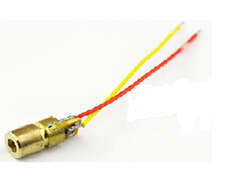Semiconductor laser is also known as laser diode (LD). As early as in 1953, in an unpublished manuscript, John Von Neumann was the first to discuss the possibility of stimulated emission produced in the semiconductor. He considered that stimulated emission can be achieved through the injection of minority carriers to the PN junction, and the transition rates between two Brillouin zones were calculated. After summing up this theory, Bardeen believed that through a variety of methods disturbing conduction band electrons and equilibrium concentration, it can cause the non-equilibrium minority carrier recombination and produce a photon, which the radiative recombination rate can be the same with amplifiers and it can be improved by the electromagnetic radiation at the same frequency. It should be said to be the earliest concept of laser.

Basov made outstanding contributions to the semiconductor laser; in 1958, he put forward the theoretical research on achieving population inversion of the semiconductor. And in 1961, he put forward through the carrier injecting in the semiconductor PN junction, "injection laser” can be achieved, and he proves the possibility to realize the particle number inversion of a highly degenerate PN junction. What’s more, he thinks that because majority carrier around the active region with high density cause the rate difference on both sides of the boundary of the active region, it leads to the optical waveguide effect. In 1961, using the concept of quasi Fermi level, Bernard and Dulafuge deduced the conditions of achieving population inversion in the semiconductor active medium, and in the following year, it provides an important theoretical guidance for the successful development of the semiconductor laser.
In 1960, Bley and Thomson of Baer laboratory put forward using parallel cleavage semiconductor surface as the resonant cavity of optical feedback, it provides feedback for the excitation light.
Reviewing the development process of these theories, basic principles of semiconductor lasers can be summarized: in the direct band gap semiconductor PN junction, the particle number inversion is realized, which is controlled by Bernard - Dulafuge conditions; the laser radiation generated by the highly degenerate electronic and vacancy complex, has concussion in the optical resonant cavity and amplification, and at last, coherent laser is generated and output.
